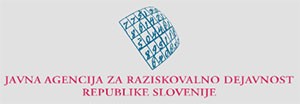Background and aims
Relative survival
Alongside incidence and mortality, cancer survival derived from population based cancer registries provides crucial information about the performance of the overall management of cancer patients in the general population and for the evaluation of health policy measures.
The relative survival methodology focuses on estimating cancerspecific survival information by taking into account the background mortality that the patients would have experienced if they had not had cancer. The background mortality is derived from life tables of all-cause mortality in the general population. This approach is crucial for international comparisons and survival trends, because background mortality rates differ widely by age, sex and race or ethnicity, as well as between countries and over time.
Net survival estimation
Inconsistent results given by methods that were used for decades in the relative survival field gave rise to several papers in the last years. However, the papers gave very different recommendations, and caused a lot of confusion with cancer epidemiologists, which led to publications of incomparable and misinterpreted results.
In recent years, successive efforts have been made by our research group to improve the theoretical understanding of the survival measures that are employed. This better understanding resulted in the construction of a new estimator of net survival, enabling fair, unbiased comparisons in cancer survival between populations and periods of diagnosis. The estimator has been quickly adopted in practice, which revealed several issues that need to be addressed. Furthermore, recent papers still show confusion between the various cancer survival measures and misinterpretations.
Aims
- The main objective of the project is to establish new standards in net survival estimation, that can replace the traditional, biased methods. To this end, we intend to solve the two main issues with net survival estimation that have up to now appeared in the literature when using our estimator: we intend to overcome the problem of large variability by setting a criterion that would help in determining the length of the follow-up in which the net survival can actually be estimated, and to introduce an alternative estimator that would allow for discretely recorded follow-up time.
- We will provide guidelines for the choice of measures and methods in the relative survival setting to decrease the gap between the theoretical advances and practical usage on one hand and to set firm grounds that shall allow for better communication between the methodological researchers on the other hand. We will study the recently proposed log-rank type test for the comparison of net survival curves and give guidelines for its usage.
- We shall fill the gap in nonparametric crude mortality estimation by proposing a new estimator that uses continuous time. To facilitate a widespread use of our methods, we will implement them in an R package and write guidelines on how to implement them in other statistical environments.
- A thorough analysis of the Slovene cancer registry data shall be made to illustrate the different ideas, find the possible pitfalls and to see what additional information can be extracted from the data by using state of the art methodology.
- As an extension of these objectives, we intend to study the usability of pseudo-observations in relative survival regression, try using the relationship between the log-rank test and the Cox model to find a new way of fitting a semiparametric regression model and study the possibility of estimating net survival in a wider context outside the populationbased cancer data.
Project phases and timeline

